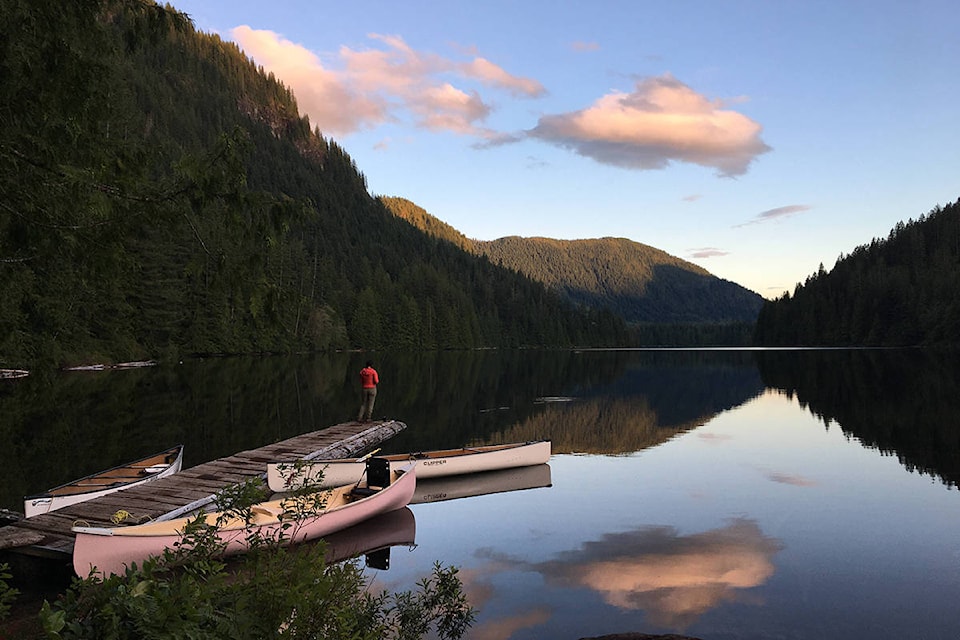The ‘Namgis First Nation is working with the province on a land use planning initiative for the Nimpkish Valley as part of B.C.’s focus on modernizing its land use plans.
The Vancouver Island Land Use Plan was finalized in 2000, and is sorely in need of an update, as land use plans do from time to time, says ‘Namgis Chief Don Svanvik.
“There was a land use plan before the Vancouver Island Land Use Plan (VILUP), and there was one before that. When they first started resource extraction here, they thought it was never going to end. But they realized, you know what, there is an end if we keep it up like this. So they changed it. This is another change, and it’s a necessary one.”
“This new plan will get us sustainably into the future,” he added.
A team of ‘Namgis, government representatives and experts make up the Gwa’ni Project Team, so named after the ‘Namgis name for the Nimpkish River — which, circuitously is an anglicized version of the name ‘Namgis.
The team will spend a few years together reviewing the 160,000 hectare area. Ultimately their recommendations will be used to create new policies to manage the resource extraction and other uses of the land. Most of the Nimpkish Valley is within Western Forest Product’s Tree Farm Licence 37.
Svanvik and Katrine Conroy, Minister of Forests, Lands, Natural Resource Operations and Rural Development signed a government-to-government agreement in February which launched the Gwa’ni Project.
“The land use planning initiative will support the economic and social well-being of ‘Namgis, communities and stakeholders who use and rely on the resources contained in the project area. A government to government consensus-based process on land use policy will mean less conflict later and will create more predictability for all operators in the area. Western Forest Products, the largest tenure holder in the area is committed to supporting this process,” the Gwa’ni team said.
The Gwa’ni Project is designed to have lots of consultation with stakeholders and regular transparency to the public.
“We’re not going to treat anybody like Indians,” said Svanvik with a wry laugh.
The project team has already sent letters to surrounding municipalities, interest groups and tenure holders, informing them of the project and giving assurance that they are recognized as stakeholders in the process and will be involved “early and often.”
Modernized Land Use Planning is a provincial priority, and includes a commitment to implementing the UN Declaration on the Rights of Indigenous Peoples. Gwa’ni Project is one of six in the province, and the only one on Vancouver Island. Others are in the Peace River area, the Nicola watershed, Squamish-Lillooet and the Sunshine Coast.
The red line shows the boundary of the Gwa'ni Project Plan Area.
RELATED: ‘Namgis First Nation partners with the Province of B.C.
‘Namgis Traditional Territory
The Nimpkish River is the longest on Vancouver Island at 90 km. The watershed links the Woss, Vernon and Nimpkish Lakes and several smaller lakes. The valley, which includes high alpine ecosystems, is rich in wildlife from all five Pacific salmon, to elk and bears.
It’s has been part of ‘Namgis territory since time immemorial. Though now based in Alert Bay on Cormorant Island north of Port McNeill, their territory is mostly south in the Nimpkish Valley.
“It’s a tough thing to have to work inside the way things are when this is our territory,” he said.
“The reason that it’s not our territory now is because long ago there were three fascist regimes around the world, and they decided it’s better if we don’t fight amongst ourselves. So they talked to the pope and the pope said, well you know what? If you find any land where the people aren’t Christian, you can claim it as your own,” Svanvik said with a quick back-of-the-envelope explanation of the Doctrine of Discovery.
That was the legal and moral argument monarchies used to colonize lands outside of Europe. It was based on a racist idea at the time that European Christians were superior.
“It was used to dehumanize, exploit and subjugate Indigenous Peoples and dispossess us of our most basic rights,” wrote the Assembly of First Nations in a 2018 paper on dismantline the Doctrine of Discovery. They argue the doctrine still influences Canadian policy and laws, and must be undone.
“So that’s the genesis of this,” Svanvik finished. ”I have a difficult time having to go into that, but [the Modern Land Use Plan] is an avenue that’s open for us to have input on what happens. Our ultimate goal here is sustainable land. We can all agree we want a sustainable future.”
Do you have something to add to this story or something else we should report on? Email: zoe.ducklow@blackpress.ca
